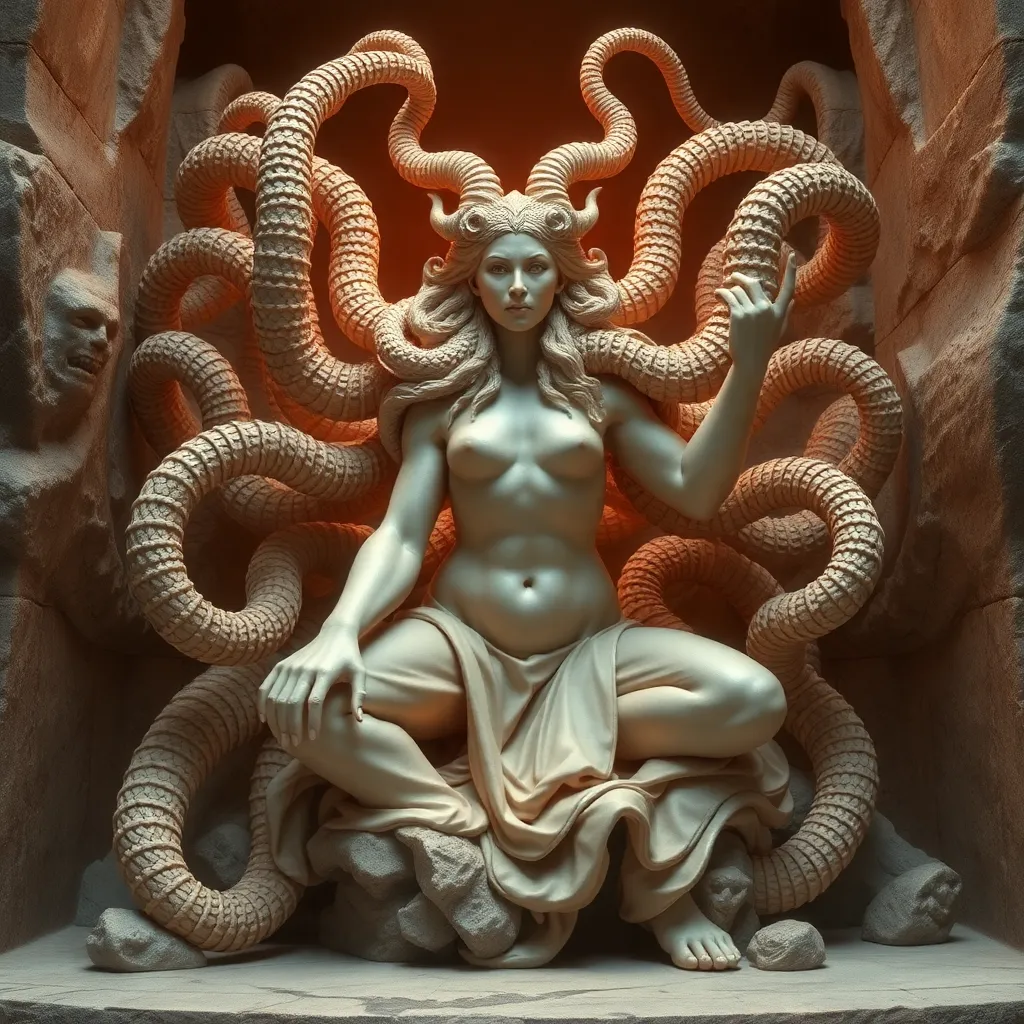The Gorgon’s Influence on Modern Fantasy Literature
Introduction to the Gorgon Mythology
The Gorgon figures, particularly Medusa, are some of the most captivating and terrifying elements of ancient Greek mythology. Medusa, the most famous Gorgon, was said to have snakes for hair and the ability to turn anyone who gazed upon her into stone. Gorgons, as a whole, represent the intersection of beauty and horror, making them powerful symbols in Greek culture.
In ancient storytelling, Gorgons served various functions, from cautionary tales about female rage and jealousy to embodiments of the monstrous feminine. Their significance transcends mere myth, influencing cultural narratives and moral lessons throughout history. Today, Gorgons continue to resonate in modern fantasy literature, where their archetype has evolved to reflect contemporary themes and issues.
The Archetype of the Gorgon in Fantasy Literature
In literature, archetypes are recurring symbols or motifs that embody universal themes and ideas. The Gorgon stands as a potent archetype, symbolizing both power and danger. She can represent the duality of femininity, embodying both nurturing and destructive aspects. This complexity makes the Gorgon a compelling figure within the broader landscape of fantasy literature.
- Power and Danger: The Gorgon’s ability to petrify her foes illustrates a profound power, often contrasted with the fragility of human life.
- Comparison with Other Archetypes: Like dragons, witches, and other mythical beings, Gorgons occupy a space of fear and fascination in fantasy narratives.
Unlike dragons, which often represent raw destructive power, Gorgons challenge the idea of beauty and femininity, making them unique within the pantheon of fantasy archetypes.
The Gorgon’s Representation of Female Power
At the heart of the Gorgon myth lies a complex portrayal of female power. Medusa’s transformation into a monster is often interpreted as a metaphor for the societal fear of female autonomy and strength. Feminist scholars have reexamined the Gorgon narrative, considering it a reflection of female rage in response to oppression.
Modern fantasy literature has taken these interpretations further, presenting Gorgon-like characters who embrace their power rather than succumb to victimhood. Notable examples include:
- Circe by Madeline Miller: A retelling of the story of Circe, exploring themes of empowerment and transformation.
- The Gilded Wolves by Roshani Chokshi: Features characters that embody the duality and complexity of the Gorgon myth.
These works illustrate the shift in narrative focus from fear of the Gorgon to an appreciation of her strength and complexity.
Gorgon-inspired Characters in Contemporary Fantasy
Many contemporary fantasy works have created characters influenced by the Gorgon myth, showcasing traits such as resilience, cunning, and inner strength. These characters often find themselves navigating worlds filled with danger and intrigue, echoing the struggles of the original Gorgon figures.
- Annabeth Chase from Percy Jackson: Although not a Gorgon herself, she embodies attributes of intelligence and bravery, reminiscent of Gorgon mythology.
- Yzma from The Emperor’s New Groove: A comedic yet dangerous character who reflects the Gorgon’s cunning nature.
These character developments show how the Gorgon myth continues to shape storytelling, allowing for richer narratives that explore identity, power, and transformation.
The Gorgon’s Role in Themes of Transformation and Identity
The theme of transformation is central to the Gorgon myth, as Medusa herself undergoes a dramatic change from a beautiful maiden to a fearsome monster. This transformation resonates with modern themes of identity, particularly in fantasy literature, where characters often grapple with their dual identities or undergo significant personal changes.
In contemporary works, the Gorgon motif is utilized to explore identity in various forms:
- Shape-shifting: Characters may transform physically or psychologically, embodying both Gorgon-like and human traits.
- Dual Identities: Many characters navigate the tension between their monstrous and human sides, reflecting the struggle for self-acceptance.
Examples of works that utilize these themes include:
- Americanah by Chimamanda Ngozi Adichie: Explores themes of identity and transformation within a modern context.
- The Bone Season by Samantha Shannon: Features characters with hidden powers and dual identities reminiscent of Gorgon lore.
Cultural Adaptations and Reimaginings of the Gorgon Myth
The Gorgon myth has been adapted across various cultures and media, showcasing the versatility of the narrative. From ancient art to modern literature, different interpretations reflect the changing societal views on femininity and power.
Modern authors often reinterpret the Gorgon myth to suit diverse cultural contexts:
- Graphic Novels: Works like “Lore Olympus” reimagine Greek myths, including Gorgons, in contemporary settings.
- Animation: Series like “Hercules” depict Gorgons in a more light-hearted, albeit still complex, manner.
The impact of cultural diversity allows for richer portrayals of Gorgons, as authors draw from various traditions and reinterpret the myth to resonate with modern audiences.
The Gorgon in Popular Culture and Its Broader Influence
Beyond literature, the Gorgon has permeated popular culture, appearing in films, video games, and graphic novels. This widespread presence underscores the Gorgon’s symbolic resonance with audiences today.
In popular culture, the Gorgon symbolizes:
- Fear of the Unknown: The Gorgon represents the dangers lurking within the unknown aspects of femininity.
- Empowerment: The imagery associated with Gorgons often reflects themes of empowerment and reclaiming one’s narrative.
Films such as “Clash of the Titans” and video games like “God of War” illustrate how Gorgon imagery shapes modern fantasy aesthetics, encouraging a fascination with the monstrous and the beautiful.
Conclusion: The Lasting Legacy of the Gorgon in Fantasy Literature
The Gorgon myth’s enduring influence on fantasy literature is evident in its rich symbolism and complex themes. From representing female power to exploring transformation and identity, the Gorgon serves as a multifaceted archetype that resonates with contemporary audiences.
As literature continues to evolve, the Gorgon may inspire future narratives that further explore her legacy, opening new avenues for storytelling and cultural reflection. The Gorgon remains a powerful figure whose influence will undoubtedly continue to shape the landscape of modern fantasy.




